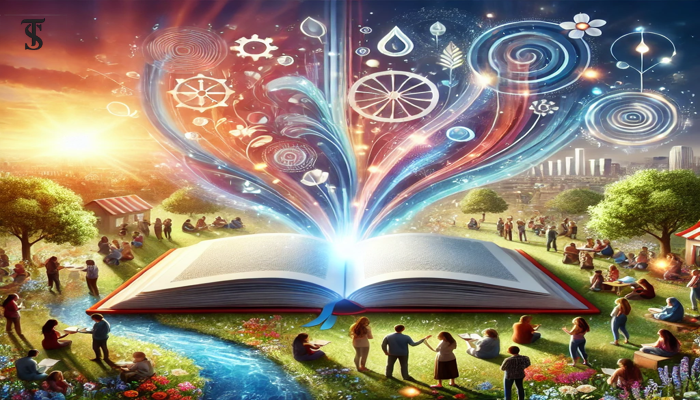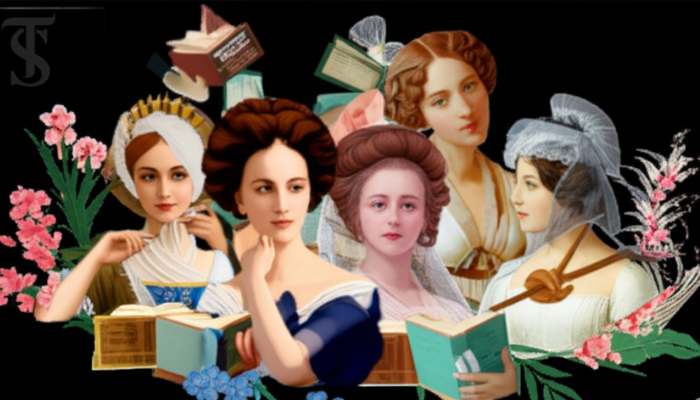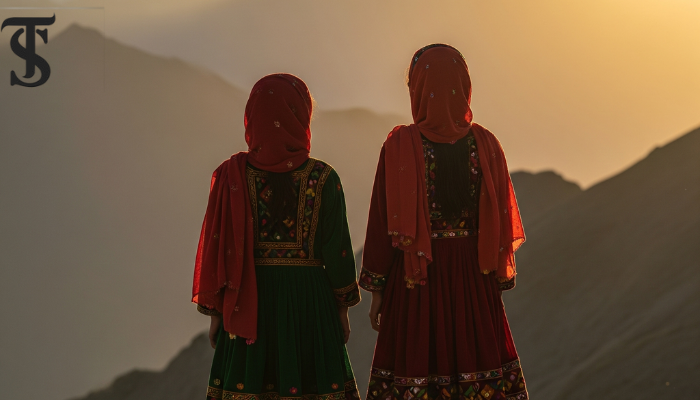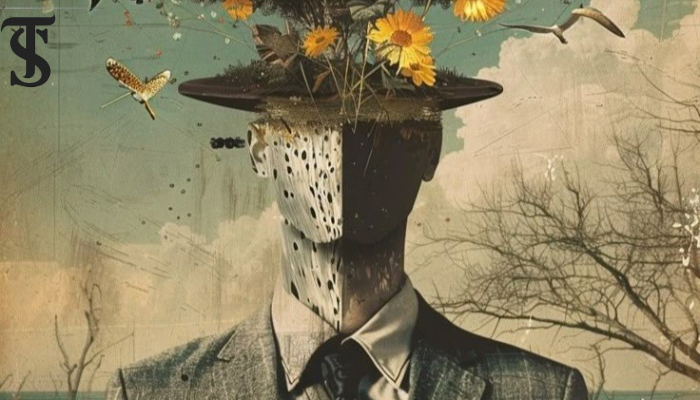Literature as a Path to Peace

- Historical and Political Peacebuilding: Literature, through works like Tolstoy's War and Peace and Orwell’s 1984, highlights the futility of conflict while advocating for non-violence and peaceful governance.
- Religious and Social Harmony: Religious texts, Sufi poetry, and interfaith literature, such as Rumi's works and The Kite Runner, promote unity, love, and empathy across religious and societal divides.
- Advocating Equality and Awareness: Literature amplifies the voices of marginalized communities, as seen in I Am Malala and To Kill a Mockingbird, fostering inclusivity and social cohesion for global peace.
Literature, as is typically defined as the mirror of life, has its deep roots in all walks of life. It has transcended its scope from being confined to entertainment and academia to endorsing peace and harmony among the global masses. Since the time of its origin, literature has shown the power of words through different literary genres and has reflected on the human experience, from being isolated in the caves to mingling into a civilized society; it has traced the evolution of human society thoroughly over time. Bearing an exceptional quality of being an ambassador of peace and unity among global civilizations through resolving issues through dialogue, empathy, and mutual respect, literature has played a pivotal role in mellowing down the political unrest, social inequalities, and religious intolerance that otherwise persists. The point to ponder over is to explore literature’s role as a symbol of peace in a world marred by conflict.
Literature is considered to possess an innate characteristic of being a tool for communication, while communication, in turn, is the key to resolving conflicts and promoting harmony. Gabriel García Márquez’s novel “One Hundred Years of Solitude” is an exemplary depiction of highlighting the destructive series of violence in Columbia (Latin America), which resonated with the conflict-torn nations. The novel is an implicit longing for peace in his homeland, which eventually was achieved with Màequez’s literary contributions playing a major role.
To examine literature’s role as a harmony-promoting field, various lenses can be used, i.e., we can view its peace-making role through the lenses of history, religion, society, and politics. These dimensions unveil that literature has offered pathways to reconciliation apart from narrating the story of conflict.
The Role of Literature in Historical Peacebuilding:
History has been evident time and again to mark literature’s vital role in peacebuilding. For instance, Leo Tolstoy’s novel ‘War and Peace,’ which reflects on the futility of war and the significance of compassion and understanding, pertains to those times when many writers, during periods of conflict, had turned to literature to criticize violence and propose peace. Tolstoy’s depiction of both the human cost of conflict and the peace that follows showcases how literature can guide people toward non-violence.
Moreover, the post-colonial narratives were also marked with the portrayal of the brutalities that many nations of the world survived during colonization and have been instrumental in healing the wounds of colonial oppression too. Writers, particularly, from formerly colonized nations have employed literature as a means of expressing their grievances while also advocating for peaceful coexistence. V.S. Naipaul’s novel “A Bend in the River” can be a good example in a post-colonial context as it shows both the negative impacts of colonization and a message of reconciliation. A story where the protagonist navigates the adversities of post-colonial life in an unnamed African country. While it stresses the uncertainty and disillusionment following colonial rule, it also highlights the possibility of coexistence among different cultures. It can thus be said that Literature not merely unravels the brutalities of colonialism but also advocates peace and unity.
Literature and Religion: A Medium for Unity:
Religious texts, like the Quran, being a prominent form of literature, have also been crucial in promoting peace. While conflicts are often rooted in religious differences, especially in sectarianism, sacred texts like the Quran impart the lessons of love, brotherhood, and tolerance, refuting the notion of sectarianism.
“Indeed, the believers are but brothers; so make settlement between your brothers. And fear Allah that you may receive mercy.” Surah Al-Hujurat (49: 10)
This verse underscores the idea of brotherhood among Muslims and encourages reconciliation and unity, shunning sectarianism and division within the community. Sufiism also promotes peace and is categorized as a piece of literature.
Sufi poetry transcends religious boundaries and offers a universal message of peace with its focus on love and unity. Sufiism, advocating the idea of peaceful coexistence and literature, has been focal in transferring these values across generations and cultures. For example, the works of Rumi, in particular, have been celebrated across the world for their emphasis on the unity of humankind and the importance of inner peace as a means of achieving outer peace, which promotes interfaith literature.
Interfaith literature, in contemporary and modern times, has earned prominence in bridging gaps between different religious communities. By showcasing narratives that highlight commonalities rather than differences, these works contribute to peaceful dialogue and understanding. “The Kite Runner,” by Khaled Hosseini, for example, despite addressing the themes of guilt, redemption, and forgiveness within a Muslim cultural context, resonates universally as people connect to the themes globally, promoting empathy across religious divides. Literature, thus, serves as an instrument for advertising and advocating inter-religious peace, reminding readers of the shared values inherent in all belief systems.
Literature and Society: Promoting Social Harmony:
Literature has long served as a medium for addressing social inequalities and promoting peace through awareness and advocacy, irrespective of the fact that a typical society, with all its complexities, is often divided by race, class, gender, and ideology. The civil rights movements in the United States were greatly influenced by literature, with works such as Harper Lee’s “To Kill a Mockingbird” and Martin Luther King Jr.’s “Letter from Birmingham Jail” playing pivotal roles in shaping public opinion. These works not only condemned injustice but also proposed peaceful solutions based on harmony and equality among social bodies.
In today’s context, literature has become a voice for marginalized communities as it continues to address pressing social issues that threaten peace, such as gender inequality. Malala Yousafzai’s memoir “I Am Malala” is a good example to quote as it advocates for girls’ education as a means of achieving peace in regions under the tyranny of terrorism and war. It also fosters greater awareness and promotes social cohesion. Literature promotes inclusivity by resonating with the stories of different societies around the world. In this way, it enhances connection among societies from various backgrounds, ultimately leading them to a one harmonious and peaceful global society.
The Political Power of Literature in Advocating Peace:
Literature has had a profound impact on shaping political discourse in favor of peace, despite politics being essentially a domain of conflict. George Orwell’s “1984” and “Animal Farm,” for example, promote the writers who penned down the impact of politics and their longing for peace and liberty. These works have been instrumental in raising awareness about the dangers of unchecked political power, urging societies toward peaceful governance. This shows the global access to literature.
Furthermore, literature’s ability to reach a global audience allows it to transcend political boundaries. Gabriel García Márquez, a Nobel laureate, used his literary platforms to advocate for peaceful solutions to political conflicts and critique violence. His works relieve readers with a gentle reminder that political peace is attainable through dialogue, cooperation, and mutual understanding, which literature helps facilitate.
Exploration unleashed; literature is a Symbol of Peace!
Literature has historically been and continues to be a symbol of peace, offering a means through which individuals and societies can reflect on conflict and seek paths toward reconciliation. Whether through historical narratives, religious texts, social commentaries, or political critiques, literature promotes dialogue, empathy, and understanding—key ingredients in the pursuit of peace. As society faces ongoing challenges such as war, inequality, and intolerance, literature serves as a reminder that peace is not only possible but necessary for the survival and flourishing of humanity. By engaging with literature, individuals are encouraged to think critically, connect with others, and ultimately contribute to a more peaceful world.
Bushra Zaheer Bhatti
The author aims to explore the complexities of literature, language, and society. With a Bachelor's in English, Linguistics, and Literature, she brings a passion for critical analysis, offering thought-provoking content that reflects language's profound influence on culture and perspectives.





